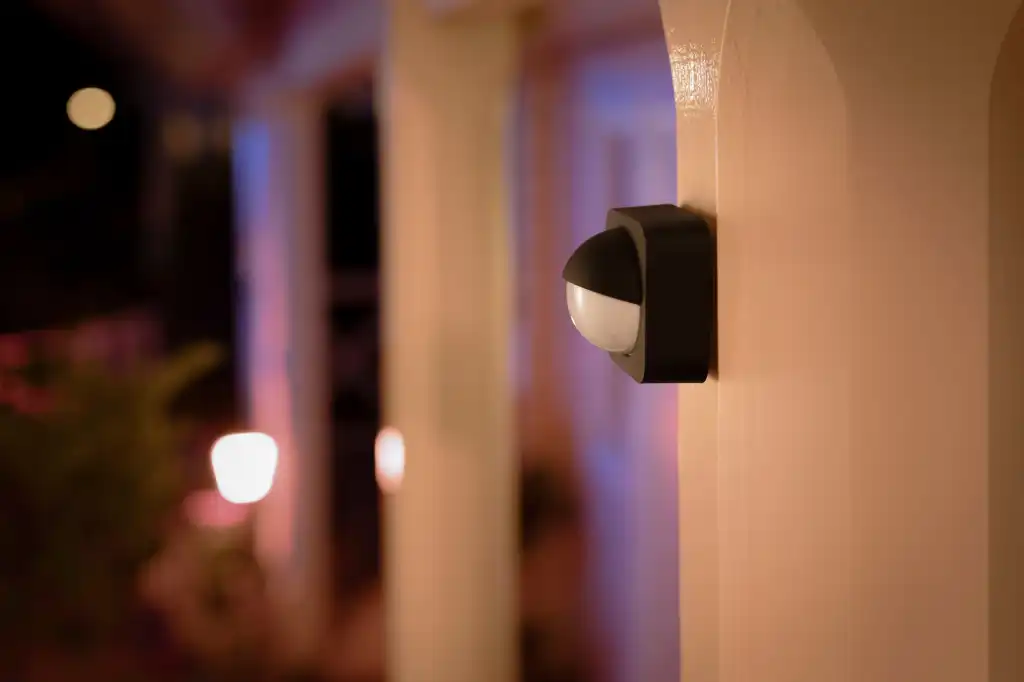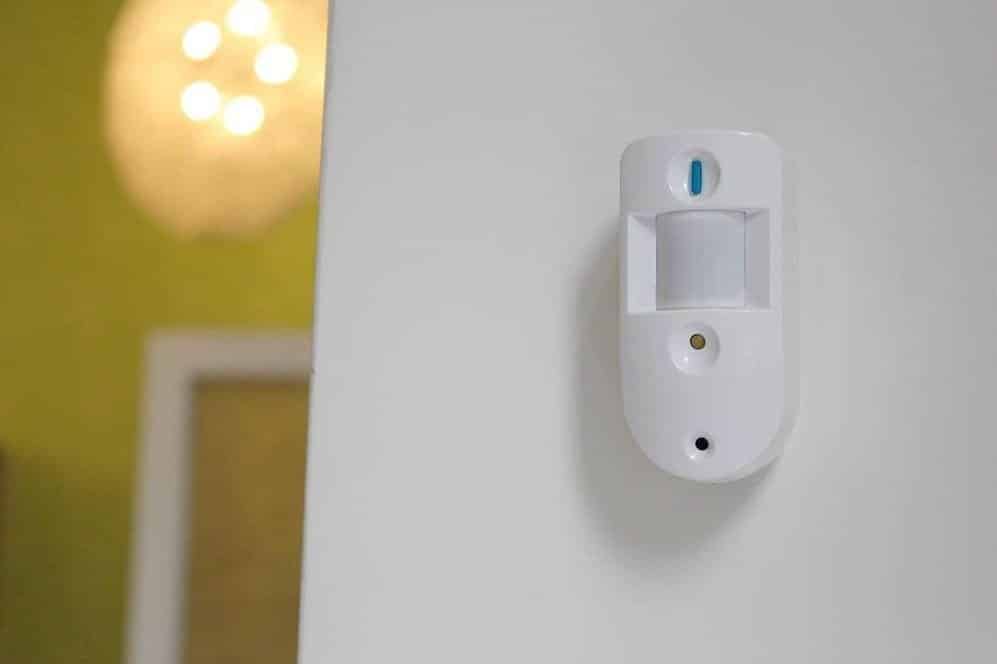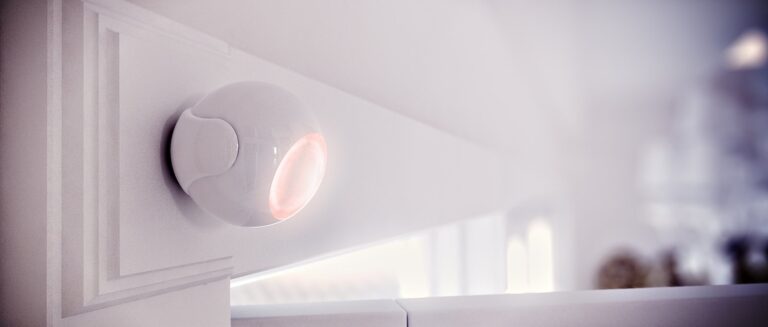Introduction
How To Adjust Motion Sensor Light Switch: Motion sensor light switches are a convenient and energy-efficient way to illuminate your home or outdoor spaces. These switches automatically turn on the lights when they detect motion and then turn them off after a certain period of inactivity. They are commonly used in areas such as hallways, garages, and outdoor security lighting. However, sometimes these switches may need to be adjusted to ensure they are working properly and meeting your specific needs.
Adjusting a motion sensor light switch may seem like a daunting task, but with a little knowledge and guidance, it can be a simple and straightforward process. In this article, we will provide you with step-by-step instructions on how to adjust a motion sensor light switch to suit your preferences.
Before diving into the adjustment process, it is important to understand the basic components and functionality of a motion sensor light switch. These switches typically consist of a motion sensor, a timer, and a light switch. The motion sensor detects movement within its range and sends a signal to the timer, which activates the light switch to turn on the lights. The timer then counts down a predetermined period of time before turning off the lights if no further motion is detected.
There are several factors to consider when adjusting a motion sensor light switch. These include the sensitivity of the motion sensor, the duration of the timer, and the range of the motion detection. By understanding these factors and how they interact, you can customize the switch to meet your specific needs and preferences.

How do I adjust my motion sensor light to stay on longer?
Adjusting the motion sensor light to stay on longer can be a useful feature for various reasons. Controlling motion sensor light duration is critical for property security and outdoor lighting. Adjusting your motion sensor light settings is easy with a few steps.
The first step in adjusting your motion sensor light is to locate the sensor itself. This is typically a small, rectangular device that is attached to the light fixture. Once you have located the sensor, you will need to access the settings panel. This can usually be done by removing the cover of the sensor or by using a small screwdriver to open the panel.
Once you have accessed the settings panel, you will need to locate the timer adjustment. This is the setting that determines how long the light will stay on after it has been triggered by motion. Depending on the model of your motion sensor light, the timer adjustment may be a dial, a switch, or a series of buttons. Consult the user manual for your specific model if you are unsure of how to adjust the timer.
After locating the timer adjustment, you can begin to increase the duration of the light. This can usually be done by turning the dial clockwise or by pressing the appropriate buttons. Some motion sensor lights may have a specific range of time options, while others may allow for more precise adjustments. Experiment with different settings to find the duration that works best for your needs.
How do I stop my motion sensor lights from turning off?
There are various causes and treatments for motion sensor lights turning off suddenly. Motion sensor lights detect movement and illuminate, however they can be too sensitive or have other technical faults that turn them off.
Motion sensor lights may turn off for reasons other than movement. If your lights are near a wind-blown tree or bush, the motion sensor may turn them off.
If your motion sensor lights are connected to a home security system, it may be malfunctioning and turning off the lights.
After ruling out false triggers and power difficulties, the motion sensor may be the issue.
How do I make my motion sensor light less sensitive?
The light may be too sensitive and triggered by the slightest movement, which can be bothersome and disruptive. There are several ways to increase the sensitivity of your motion sensor light to fit your needs.
First, learn how motion sensor lights work. These lights turn on when they detect motion using infrared and motion sensing.
To make your motion sensor light less sensitive, start by locating the sensitivity adjustment dial or switch. This is usually located on the bottom or side of the motion sensor unit. Once you have located the adjustment, you can begin to make changes. If your light has a dial, turning it clockwise will increase the sensitivity, while turning it counterclockwise will decrease it. If your light has a switch, flipping it to the low setting will decrease the sensitivity.
Can motion sensor lights be adjusted?
Yes, motion sensor lights can be adjusted to suit your specific needs and preferences. These lights are designed to detect motion and automatically turn on when someone enters their range. However, the sensitivity and range of motion detection can vary depending on the model and settings of the light.
Adjusting the sensitivity: Most motion sensor lights have a sensitivity adjustment feature that allows you to control how easily the light is triggered by motion. This can be useful in preventing false alarms caused by small animals or moving branches. By adjusting the sensitivity, you can ensure that the light only turns on when there is significant motion in the area.
Adjusting the range: The range of motion detection determines how far away the sensor can detect motion. Some lights have a fixed range, while others allow you to adjust it according to your needs. If you want the light to detect motion from a greater distance, you can increase the range. On the other hand, if you only want the light to activate when someone is very close, you can decrease the range.
Adjusting the duration: In addition to sensitivity and range, motion sensor lights often have an adjustable duration setting. This setting determines how long the light stays on after detecting motion. You can set it to stay on for a few seconds or several minutes, depending on your requirements. This feature is particularly useful for outdoor lights, as it can help conserve energy by ensuring that the light only stays on for as long as necessary.
Overall, motion sensor lights offer flexibility and customization options to meet your specific needs. By adjusting the sensitivity, range, and duration settings, you can optimize the performance of these lights and enhance their functionality in your home or outdoor space.
How do you turn off a motion sensor switch?
Turning off a motion sensor switch is a relatively simple process that can be done in a few easy steps. Motion sensor switches are commonly used in homes and businesses to automatically turn on lights or other devices when motion is detected. However, there may be times when you want to turn off the motion sensor switch, either temporarily or permanently. In this answer, we will discuss the steps to turn off a motion sensor switch.
Step 1: Locate the motion sensor switch. The motion sensor switch is typically installed near the area where it is intended to detect motion, such as near a doorway or in a hallway. It may be mounted on the wall or ceiling, depending on the specific installation. Take a moment to familiarize yourself with the location of the motion sensor switch before proceeding.
Step 2: Identify the power source. Motion sensor switches are typically connected to the electrical wiring of the building. To turn off the motion sensor switch, you will need to locate the power source that supplies electricity to the switch. This may be a circuit breaker or a dedicated switch on the electrical panel. It is important to ensure that you have identified the correct power source before proceeding.
Step 3: Turn off the power. Once you have identified the power source, you can proceed to turn off the power to the motion sensor switch. If the motion sensor switch is connected to a circuit breaker, locate the corresponding breaker on the electrical panel and switch it to the “”off”” position. If the motion sensor switch has a dedicated switch, simply flip the switch to the “”off”” position.
Are there any specific tools or equipment needed to adjust a motion sensor light switch?
When adjusting a motion sensor light switch, there are a few specific tools and equipment that can be helpful. Firstly, you will need a screwdriver, preferably a Phillips head or flathead screwdriver depending on the type of screws used to secure the switch. This will allow you to remove the cover plate and access the internal components of the switch.
In addition to a screwdriver, it is also recommended to have a voltage tester or multimeter. This will help you ensure that the power to the switch is turned off before making any adjustments, preventing the risk of electrical shock. A voltage tester can quickly and easily determine if there is any live electricity present in the switch.
Can you provide any troubleshooting tips for common issues with motion sensor light switches?
When it comes to troubleshooting common issues with motion sensor light switches, there are a few tips that can help you identify and resolve the problem. One common issue is the light not turning on when it should. This could be due to a few different reasons. First, check to make sure that the power is properly connected and that the switch is turned on. If the power is connected and the switch is on, the next step is to check the sensitivity settings. Adjusting the sensitivity level may solve the problem and allow the light to turn on when motion is detected.
Another common issue is the light staying on continuously, even when there is no motion. This can be caused by a few different factors. First, check to make sure that there is no debris or obstructions blocking the motion sensor. If the sensor is clear, the next step is to adjust the timer settings. Increasing the timer duration may solve the problem and prevent the light from staying on longer than necessary.
In some cases, motion sensor light switches may experience false triggers, where the light turns on even when there is no motion. This can be frustrating and may waste energy. To troubleshoot this issue, check for any sources of interference, such as nearby heat sources or reflective surfaces. Adjusting the sensor’s range and angle may also help reduce false triggers. If the problem persists, it may be necessary to replace the motion sensor light switch with a more advanced model that offers better sensitivity and accuracy.
Are there any safety precautions to keep in mind when adjusting a motion sensor light switch?
When adjusting a motion sensor light switch, it is important to prioritize safety to prevent any accidents or injuries. Here are some key safety precautions to keep in mind:
1. Turn off the power: Before starting any work on the motion sensor light switch, make sure to turn off the power at the circuit breaker. This will help prevent any electrical shocks or short circuits.
2. Use proper tools: Ensure that you have the necessary tools for the job, such as a screwdriver or pliers. Using the correct tools will not only make the adjustment process easier but also reduce the risk of damaging the switch or surrounding components.
3. Follow manufacturer instructions: Always refer to the manufacturer’s instructions and guidelines when adjusting the motion sensor light switch. Each switch may have specific requirements or precautions that need to be followed for safe and proper adjustment.
4. Avoid overloading the switch: Be mindful of the maximum load capacity of the motion sensor light switch. Overloading the switch with too many lights or appliances can lead to overheating and potential fire hazards. Make sure to distribute the load evenly or consider using multiple switches if needed.
5. Test the switch after adjustment: Once you have made the necessary adjustments, test the motion sensor light switch to ensure it is functioning correctly. This will help identify any potential issues or malfunctions before leaving the area.
By following these safety precautions, you can adjust a motion sensor light switch with confidence, knowing that you have taken the necessary steps to protect yourself and your property from any potential hazards.
Are there any specific brands or models of motion sensor light switches that are easier to adjust than others?
When it comes to adjusting motion sensor light switches, there are indeed some brands and models that are known to be easier to work with than others. One such brand is Leviton, which offers a range of motion sensor light switches that are designed for easy adjustment. These switches often come with clear instructions and user-friendly interfaces, making the adjustment process a breeze.
Many Lutron versions include additional features like changeable sensitivity and timer settings, which may be customized.
While some types and models may be easier to change, it also depends on your familiarity with the switch and its instructions. To ensure a smooth adjustment, read the user handbook and follow the manufacturer’s instructions.

Conclusion
Adjusting a motion sensor light switch is easy and can improve outdoor lighting. This article will help you calibrate your motion sensor light switch to detect motion and illuminate properly. Adjusting your motion sensor light switch might improve home security or convenience by turning lights on automatically.
One of the key benefits of adjusting a motion sensor light switch is the ability to customize the settings to suit your specific needs. By adjusting the sensitivity, range, and duration of the motion sensor, you can ensure that the lights only activate when necessary and avoid any false alarms or unnecessary energy consumption. This level of customization allows you to strike the perfect balance between security and convenience, ensuring that your lights are responsive to movement but not overly sensitive.
Additionally, adjusting a motion sensor light switch can also help to prolong the lifespan of your light bulbs. By reducing the amount of time that the lights are on, you can minimize the wear and tear on the bulbs and extend their overall longevity. This can result in cost savings over time, as you will not need to replace the bulbs as frequently. Furthermore, by adjusting the sensitivity of the motion sensor, you can prevent the lights from turning on unnecessarily during daylight hours, further reducing energy consumption and extending the lifespan of the bulbs.

